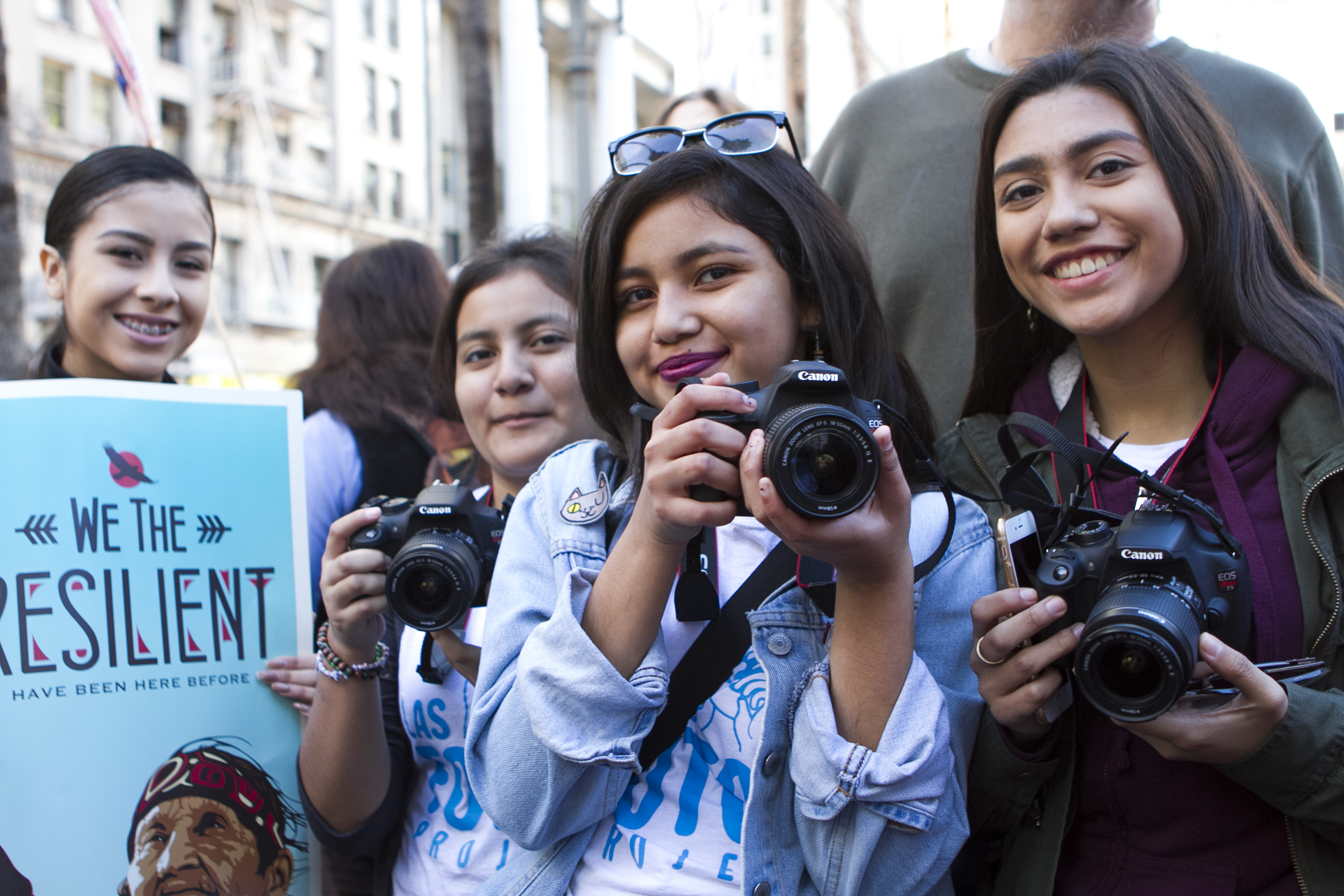LOS ANGELES — When Stephanie Medina picked up a “professional” camera for the first time two years ago, she never expected her photos could have such an impact on her and her community.
She zoomed in on a world of lighting, angles and framing as a participant with Las Fotos Project, a nonprofit photography organization for teen girls in underserved communities. But it was the program’s focus on health, wellness and advocacy that hooked the 16-year-old from Los Angeles’ Eastside neighborhood of Boyle Heights.
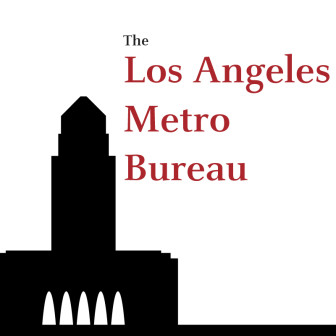 “It’s not just about going and taking random pictures. You’re taking pictures to convey a message and present it to your community,” Medina said.
“It’s not just about going and taking random pictures. You’re taking pictures to convey a message and present it to your community,” Medina said.
Soon, Medina had built a portfolio of photos documenting how density in her neighborhood led to overcrowded and dirty streets, how street vendors were being criminalized by police, and how teens facing poverty and violence fell victims to drug abuse.
“These issues specifically target our community because we’re low income, because we don’t have access to different things that other people in different communities have,” Medina said.
While research shows low-income communities of color are more likely to face health disparities — differences in health closely linked with social, economic and environmental disadvantages — it’s not always easy to make residents aware of how to reduce them. Yet, teens in Las Fotos Project have learned to use photography as a tool for community advocacy and cultural documentation, providing a model for how residents themselves can help promote health in their own communities.
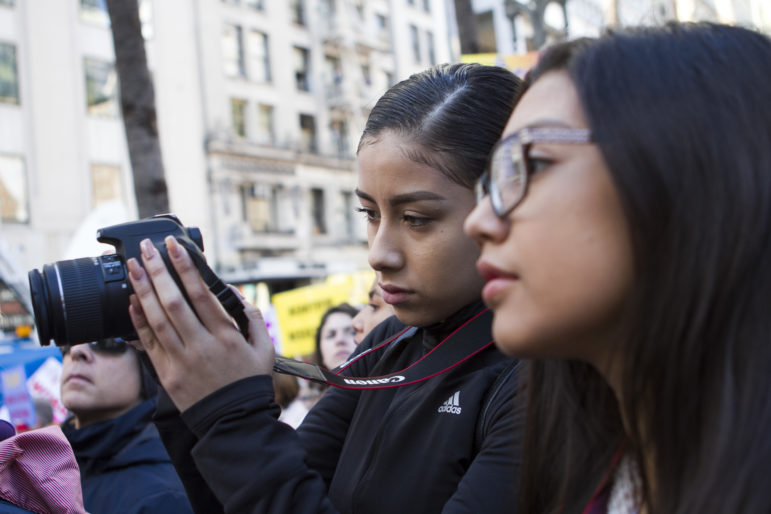
Las Fotos Project participant Julianna Aguirre, left, prepares her camera at the Women’s March in downtown Los Angeles on Jan. 21, 2017.
For Las Fotos Project Founder and Executive Director Eric Ibarra, providing a level of advocacy and leadership for girls living in communities facing these challenges was key.
“If you’re aware that something is happening around you, you at least have the option to choose to act different or make different choices,” Ibarra said. “But if you are totally oblivious to what’s going on around you, you fall victim to that same cycle.”
After launching a pilot project in downtown Los Angeles in 2010, Las Fotos Project began to partner with centers and schools in communities across the city, including Highland Park, Koreatown, South Los Angeles and East Los Angeles, Long Beach, MacArthur Park and other low to middle-income communities of color.
Today, the program has its headquarters in Lincoln Heights, a low-income neighborhood northeast of downtown LA, and also expanded its reach with satellite locations in Mexico and Venezuela. Through mostly volunteer mentors, girls ages 11 through 18 are offered a series of programs where they get trained on the fundamentals of photojournalism but also learn about mindfulness, identity, and the impacts of health and social conditions within their environment.
Research shows health disparities impose a steep cost on the U.S. economy. According to the National Partnership for Action to End Health Disparities, racial and ethnic minorities, identified as some of the most vulnerable groups in American, are more likely to suffer from disease and may die up to 20 years earlier than others. In an effort to combat those effects, the U.S Department of Health and Human Services launched its Action Plan to Reduce Racial and Ethnic Disparities in 2011 as a way to continuously assess the impact of all policies and programs on racial and ethnic health disparities across the country.
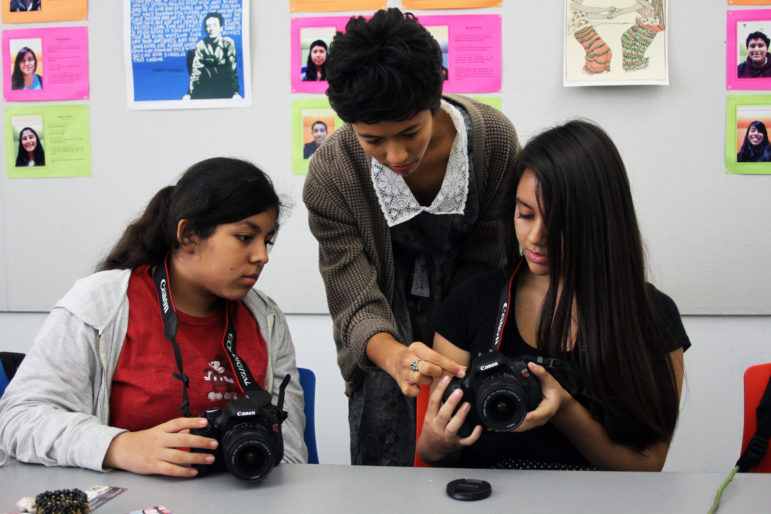
Volunteer mentors give girls tips on proper photo techniques.
Several states have also implemented their own strategies. In California, health advocates are about midway through a 10-year plan that focuses on improving conditions under which young people in underserved communities can be healthy and thrive.
Beatriz Solis, southern region director of the California Endowment’s Healthy Communities initiative says helping residents understand the factors that contribute to health disparities is vital.
“Your zip code determines your health more than your genetics,” Solis said. “Where you live, where you go to school, the amenities in your community, all those things matter to community health.”
Solis says the goal is to apply local strategies designed by residents and provide them with the resources needed to take action and spur changes in policy.
Julianna Aguirre, a 16-year-old student from the neighborhood of Highland Park, says she began feeling like she could be part of that change as an advocate for her community when she joined Las Fotos Project last fall.
As a child, she witnessed police storm her house and arrest her brothers because of their gang and drug affiliations. Today, she says, it breaks her heart to see them roaming the streets, drug addicted and suffering from mental health conditions.
“Having to grow up and being exposed to these things … I just wanted to do something to change it,” Aguirre said.
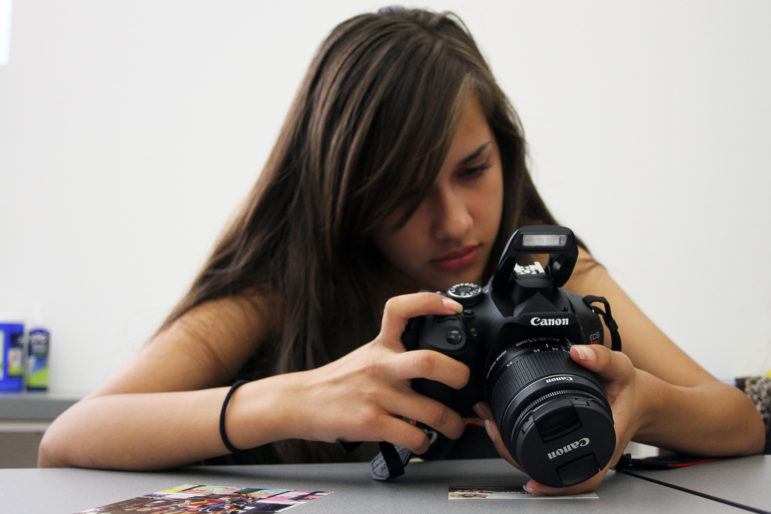
In her latest project as part of Las Fotos Project’s Digital Promotoras program, Aguirre felt compelled to photograph two workers who educate people about their rights, discrimination and how to avoid falling into the criminal justice system as a result of practices in educational institutions.
She presented her multimedia project at a community showcase in January and said it nearly brought her mother to tears. It felt good, she said, to also get recognition from her friends. “They thought I did an amazing job in displaying the reality of the lives of people of color.”
Today, Aguirre is an active member of several community organizations and school clubs. She said she feels proud to raise awareness and share resources about social justice and health disparities in her community through the lens of a camera or other means.
That kind of community engagement and participation is crucial to achieving health equity says Janina Morrison, primary care physician at the Los Angeles County-USC Medical Center.
As medical director for the Wellness Center at the Historic General Hospital, a one-stop destination where residents and patients can access prevention and health resources, Morrison has been working closely with residents and community organizations.
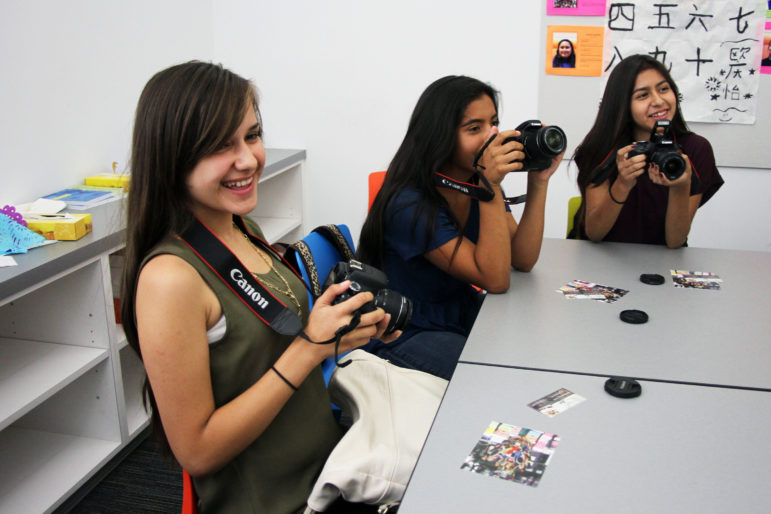
Girls attend a training session at Las Fotos Project during the fall 2014 session.
She said the collaboration provides a “constant feedback loop” that better informs doctors and health professionals what their patients are facing and what they need to get healthy.
And young people are a major piece in that puzzle, she said.
“Getting youth interested in these topics, getting them the right information, getting them involved in changing their communities so they and their whole families have access to the things they need is really going to be the only way we’re going to see change,” Morrison said.
Jessica Perez trains students in community reporting as a fellow at the USC Annenberg School of Journalism.
FOR MORE INFORMATION ON HEALTH IN OST, GO TO THE OST HUB.


